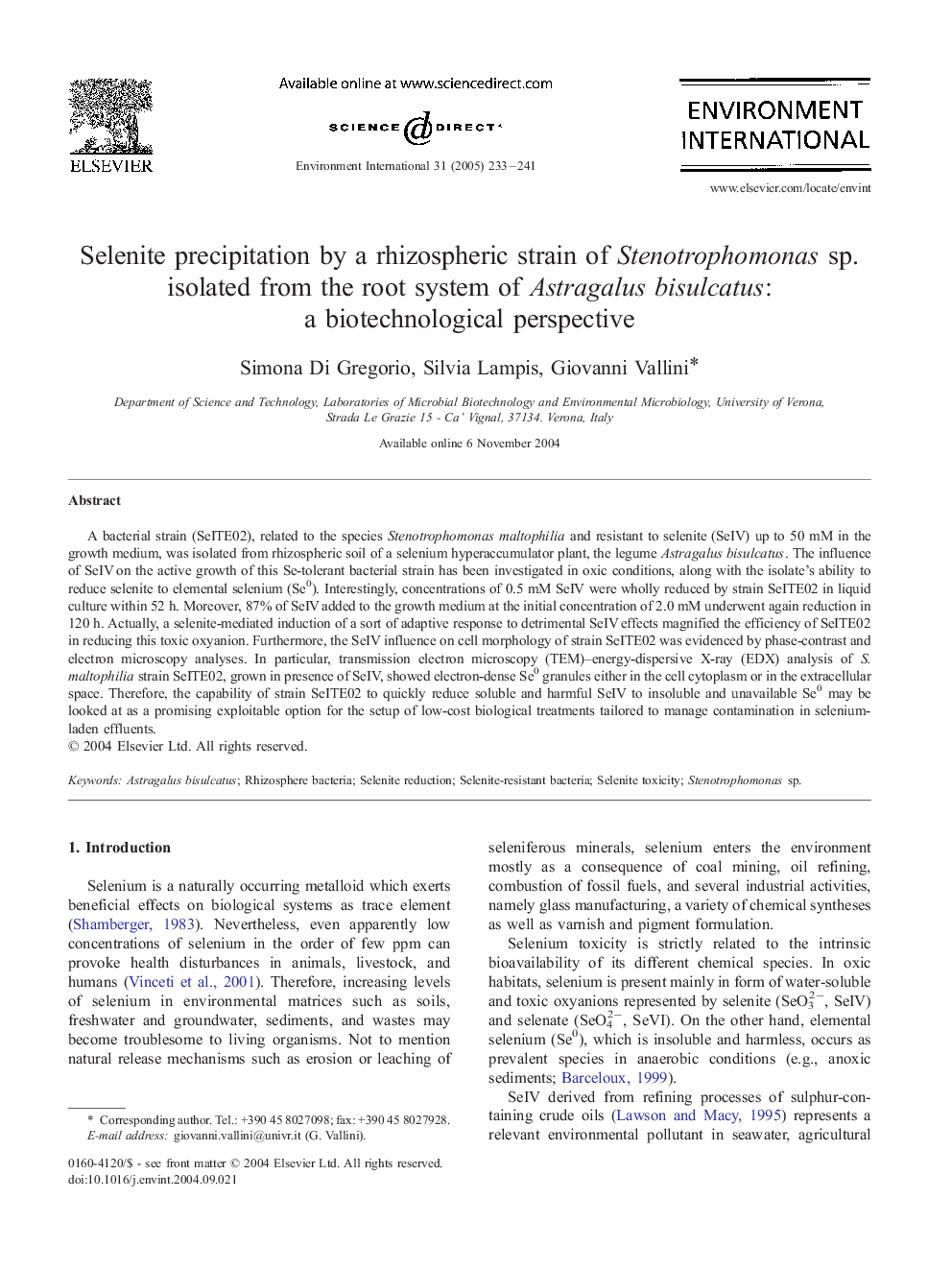| Article ID | Journal | Published Year | Pages | File Type |
|---|---|---|---|---|
| 9455544 | Environment International | 2005 | 9 Pages |
Abstract
A bacterial strain (SeITE02), related to the species Stenotrophomonas maltophilia and resistant to selenite (SeIV) up to 50 mM in the growth medium, was isolated from rhizospheric soil of a selenium hyperaccumulator plant, the legume Astragalus bisulcatus. The influence of SeIV on the active growth of this Se-tolerant bacterial strain has been investigated in oxic conditions, along with the isolate's ability to reduce selenite to elemental selenium (Se0). Interestingly, concentrations of 0.5 mM SeIV were wholly reduced by strain SeITE02 in liquid culture within 52 h. Moreover, 87% of SeIV added to the growth medium at the initial concentration of 2.0 mM underwent again reduction in 120 h. Actually, a selenite-mediated induction of a sort of adaptive response to detrimental SeIV effects magnified the efficiency of SeITE02 in reducing this toxic oxyanion. Furthermore, the SeIV influence on cell morphology of strain SeITE02 was evidenced by phase-contrast and electron microscopy analyses. In particular, transmission electron microscopy (TEM)-energy-dispersive X-ray (EDX) analysis of S. maltophilia strain SeITE02, grown in presence of SeIV, showed electron-dense Se0 granules either in the cell cytoplasm or in the extracellular space. Therefore, the capability of strain SeITE02 to quickly reduce soluble and harmful SeIV to insoluble and unavailable Se0 may be looked at as a promising exploitable option for the setup of low-cost biological treatments tailored to manage contamination in selenium-laden effluents.
Related Topics
Life Sciences
Environmental Science
Environmental Chemistry
Authors
Simona Di Gregorio, Silvia Lampis, Giovanni Vallini,
